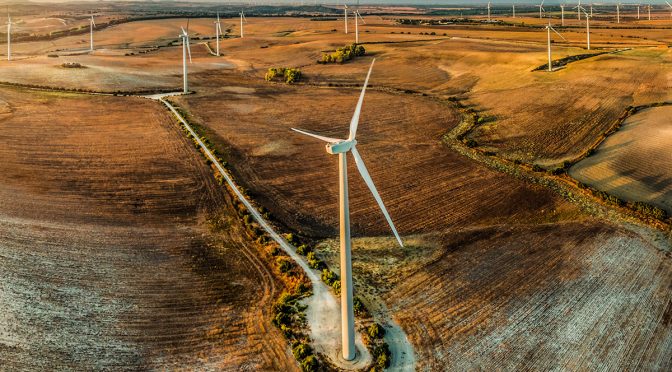The demand for electricity in Spain fell by 3.5% in September. Wind power generated 20.8% until September, Concentrated Solar Power 1.8% and photovoltaic 11%.
This decrease is observed once the effects of labor and temperatures during that month have been corrected.
37.2% of electricity production in September in Spain was renewable and 58.2% did not emit CO2 equivalent.
Photovoltaic generation increased its production by 37.3% compared to September 2021, while wind power has increased generation by 29.6%.
The national electricity demand experienced a decrease of 3.5% in September with respect to the same month of the previous year and once the effects of temperature and working hours were discounted. In gross terms, a demand of 20,427 GWh is estimated, 2.7% lower than that of September 2021.

Evolution of national demand until September 2022
The behavior of demand in September confirms the downward trend also observed in the month of August. Thus, in the first nine months of 2022, according to provisional data, once the influence of the calendar and temperatures have been corrected, demand is 2.1% lower than that registered in the previous year.
In the month of September, and according to data estimated to date, generation from renewable energy sources represented 37.2% of production. 58.2% of electricity production came from technologies that do not emit CO2 equivalent.
For its part, the generation of wind origin in September was 4,186 GWh and accounted for 17.6% of the total, with an increase of 29.6% compared to September 2021. Meanwhile, solar photovoltaic, with 2,637 GWh recorded in September, increased its production by 37.3% compared to last year, reaching a share of 11.1% of the total. Hydroelectric generation decreased by 14.2% compared to September 2021 due to the lack of precipitation.

generation structure in September and year 2022
Peninsular electricity demand
In the peninsular electricity system, the demand for September fell by 4.1%, compared to September 2021, taking into account the effects of labor and temperatures (19,059 GWh, 3.2% less than that registered in the same month of 2021 in gross terms).
Once again at the peninsular level, the downward trend in demand that was also observed last August is confirmed. In the first nine months of 2022, once the influence of both factors has been corrected, demand is 2.8% lower than that registered in the same period of the previous year.
During this month and according to estimated data to date, 38.5% of peninsular generation was from renewable sources and 60.7% came from technologies that do not emit CO2 equivalent. For its part, wind energy registered 4,059 GWh and contributed 18% of electricity, while photovoltaic solar energy, with 11.5% of the mix, has increased its production by 37.4% compared to the same month of the previous year, up to 2,586 GWh.
The demand for electrical energy in the Balearic and Canary Islands
In the Balearic Islands, the demand for electricity in this month is estimated at 595,452 MWh, 9.5% higher than that registered in September 2021. According to provisional data, if the effects of the calendar and temperatures are taken into account, the increase stands at 11.7% compared to the previous year. This summer, the electricity demand in the Balearic Islands has experienced an increase of 16.7% in July compared to July of last year and 15% in August compared to the same month of 2021. Taking into account the factors of temperature and calendar, the increases they were 15.7% and 17.4%.
Regarding generation, the combined cycle, with 73.9% of the energy produced in the Balearic Islands, was the first source of the islands in September. Thus, renewable energy without CO2 equivalent emissions generated in the Balearic community represents 7.2% of the total. In addition, during this month, the submarine link between the Peninsula and Mallorca contributed to cover 11.7% of the Balearic electricity demand.
For its part, in the Canary archipelago, the demand for electrical energy is estimated at 738,773 MWh, 2% higher than that registered in September 2021. If the effects of the calendar and temperatures are taken into account, the demand increases by 1 .8% compared to the previous year. The electricity demand had registered an increase of 7.8% in July and 4% in August, always compared to the same months of 2021. Discounting the effects of the calendar and temperatures, the increases were 6.7% in July and 3 .5% in August.
As for electricity generation in the Canary Islands, the combined cycle, with 41.1% of the total, was also the leading source in September. Thus, renewables and emission-free technologies represented 21.1% of production, with the contribution of wind power being 17.2%.


